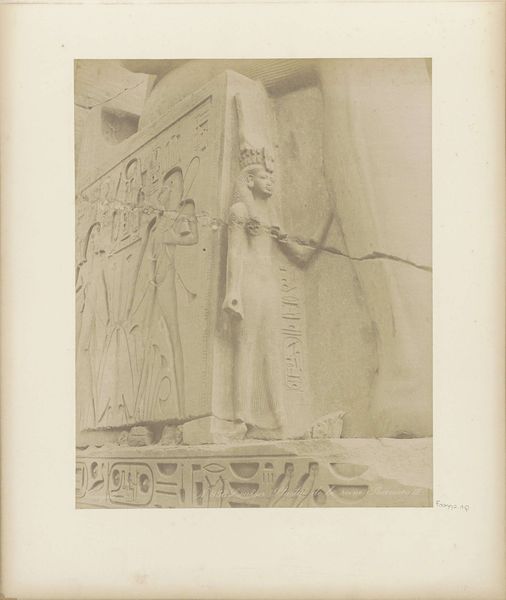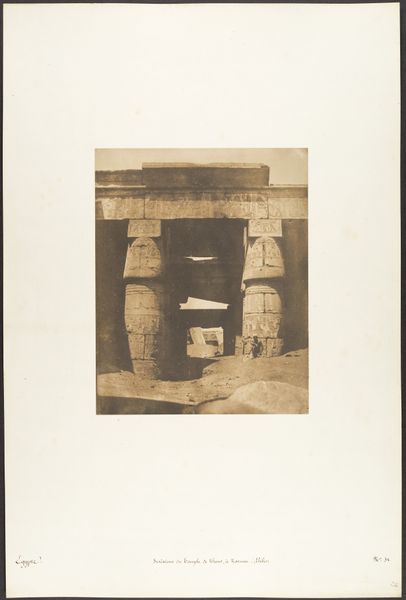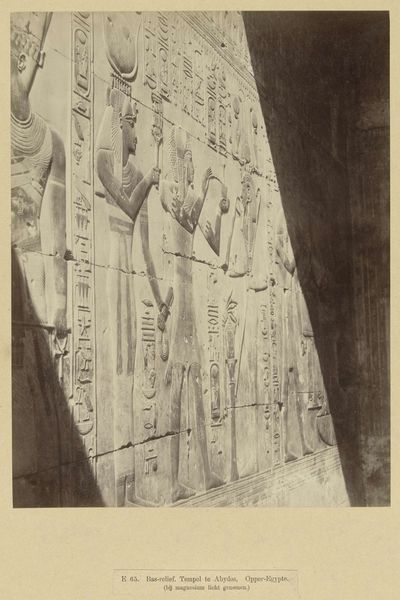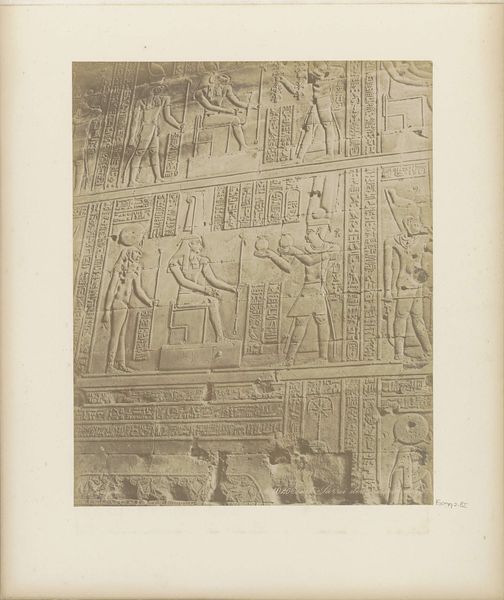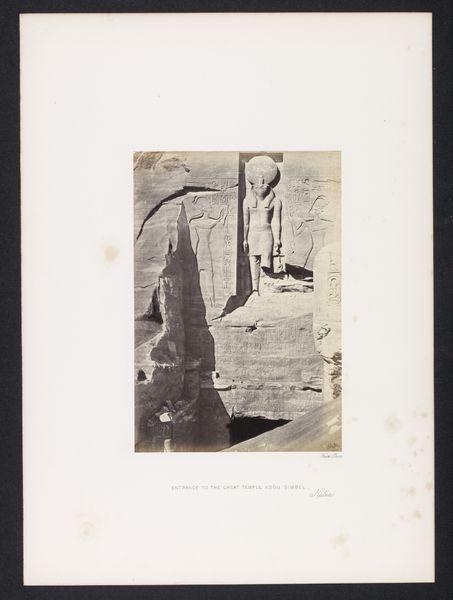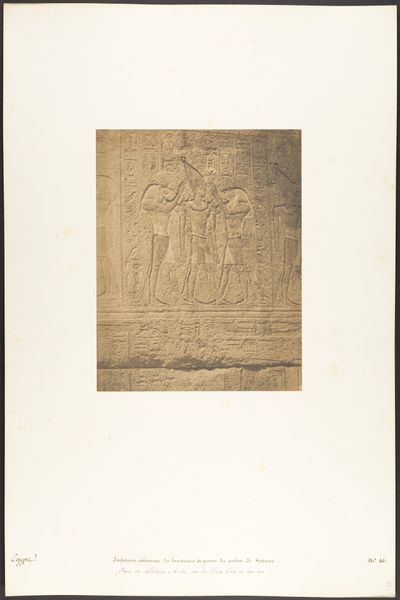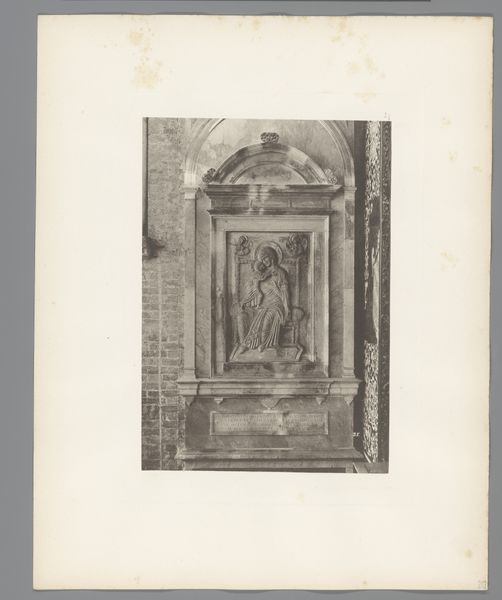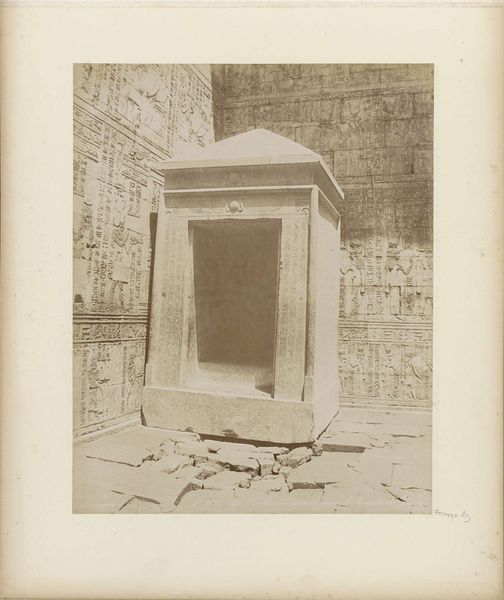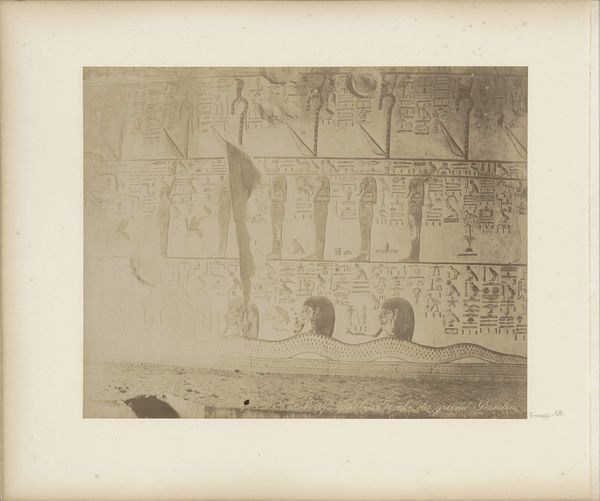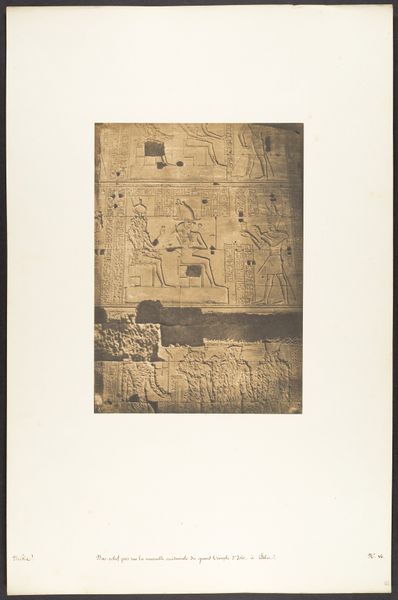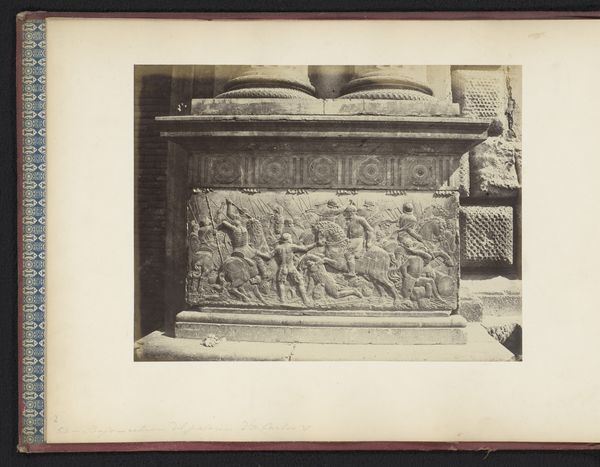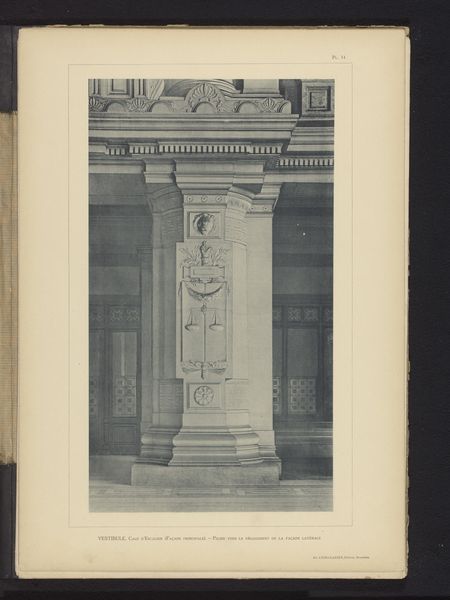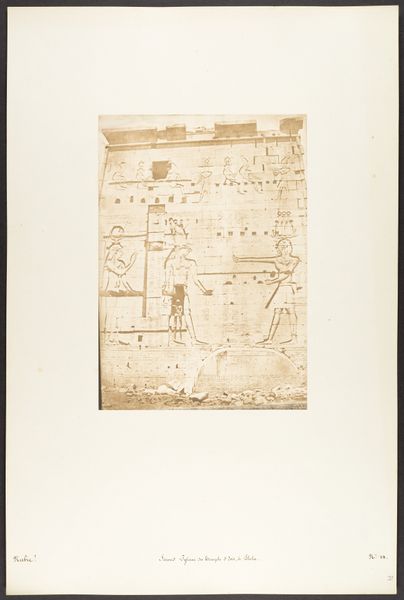
relief, photography, gelatin-silver-print
#
portrait
#
relief
#
ancient-egyptian-art
#
figuration
#
photography
#
ancient-mediterranean
#
gelatin-silver-print
#
history-painting
Dimensions: height 276 mm, width 220 mm
Copyright: Rijks Museum: Open Domain
Curator: What a compelling photograph, even now. This gelatin silver print captures a relief from the temple of Seti I at Abydos. The photographic print was produced sometime between 1870 and 1890 by C. & G. Zangaki. Editor: The density of imagery is remarkable, isn't it? At first glance, it evokes such a sense of antiquity. But the composition and greyscale create this striking visual impact as if collapsing millennia of symbolic language into a singular aesthetic statement. Curator: Indeed, it's a layered text—visually and politically. The depiction of pharaoh Seti I paying homage—likely making offerings—is far from a neutral record. The photograph itself reflects the 19th-century European fascination with and appropriation of Egyptian history. This visual document embodies complex colonial power dynamics. Editor: Precisely. The image reads to me as a fascinating interplay between power and piety. Look at the specific symbolic elements. Each gesture, each object presented—the scepter, the headdress—these are not mere decorations. They signify specific roles, relationships, and cosmic order within their culture, yet they're captured, studied, categorized through the Western gaze. Curator: Right, and it invites reflection on the means through which ancient civilizations become accessible, or perhaps, inevitably altered, through modern representation. How do these depictions shape our understanding, and who controls that shaping? The act of photographing, archiving, and displaying like this echoes modern methods of reinforcing existing power structures. Editor: I concur. It underscores the enduring potency of archetypes and symbols. How even rendered through the filter of photography, ancient belief systems continue to resonate—even if filtered or misconstrued—in our collective cultural memory. Perhaps its power derives not just from artistic intention, but from an intersection of intention and chance, across layers of time. Curator: So we see then how one image prompts discussions on representation, power, and cultural legacy, inviting a continual interrogation of history and its interpretation. Editor: Absolutely, and demonstrating that, even beyond aesthetics, artworks such as this become vibrant interfaces, connecting present and past perceptions through symbolic exchange.
Comments
No comments
Be the first to comment and join the conversation on the ultimate creative platform.

